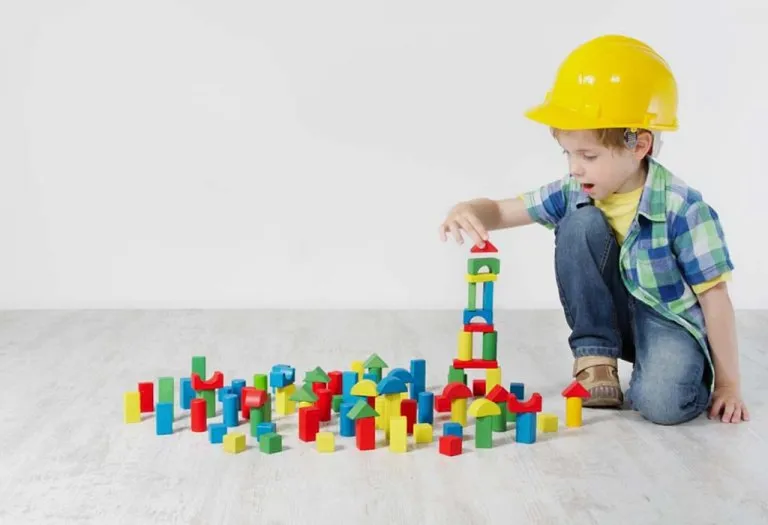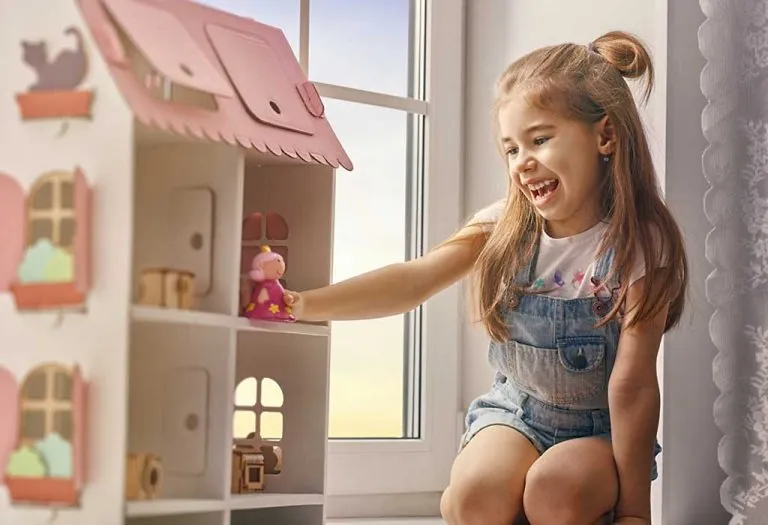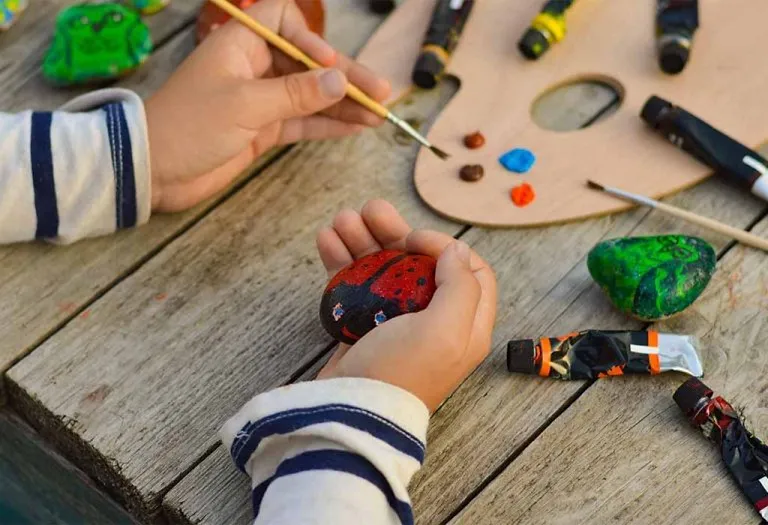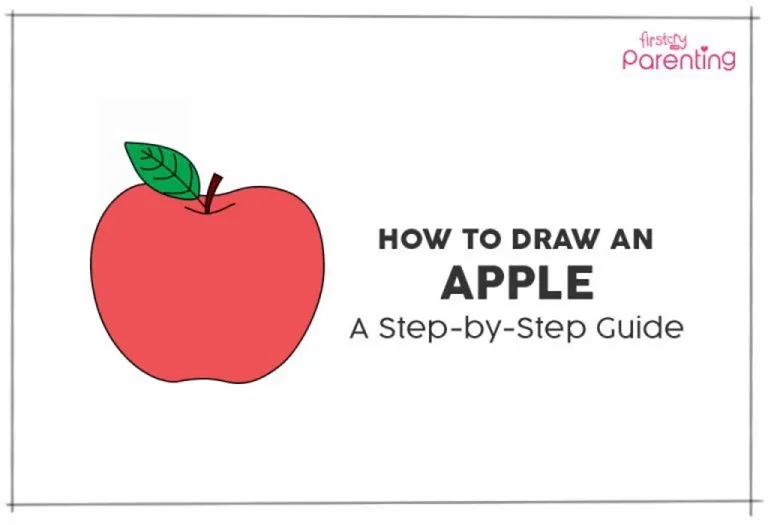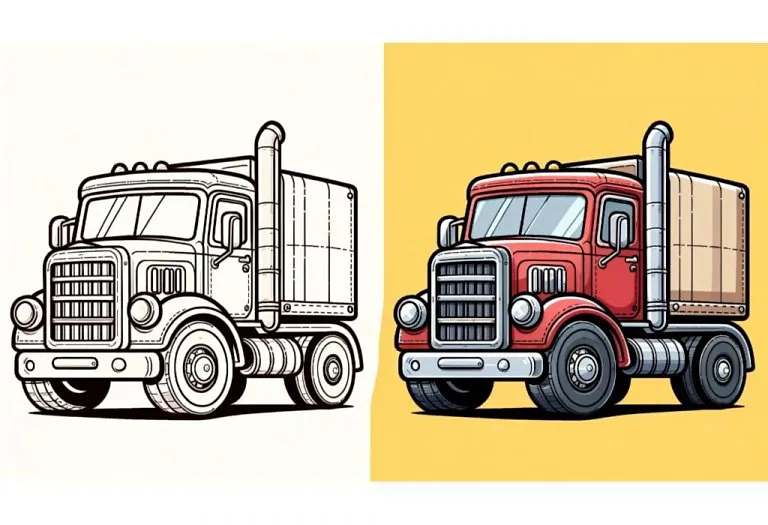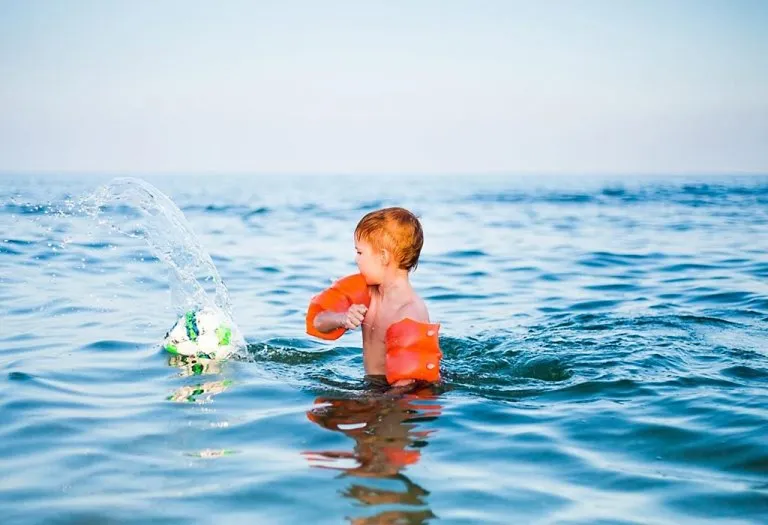Constructive Play – Benefits & Play Ideas
- What Is Constructive Play?
- When Do Kids Start Construction Play?
- Types of Constructive Play
- Characteristics of Constructive Play
- Benefits of Constructive Play in Early Childhood
- How to Encourage Constructive Play in Your Child?
- Easy Constructive Play Activities for Your Child
- Ways to Add Constructive Play to Your Daily Activities
- FAQs
Young children are a powerhouse of energy and creativity, and in order to channelise their energy in a positive direction, it is essential to engage them in some constructive play. This type of play not only keeps them entertained but also enhances their imagination and teamwork abilities.
Read this article to know what exactly constructive play is, how you can encourage your child to get involved in it, and what are its various benefits. Also, learn about some fun, constructive play activities for children, such as stacking blocks, construction site play, or designing simple structures. These activities provide endless opportunities for learning while keeping kids engaged and happy.
What Is Constructive Play?
Whenever a child is given some elements or toys of the play environment to construct something new by manipulating these elements, it can be termed as constructive play. This play method may include all sorts of constructing activities such as assembling, stacking, moulding, sorting, or even dissembling.
When Do Kids Start Construction Play?
Children typically begin engaging in construction play as early as 12 to 18 months old, when they start stacking blocks or fitting simple shapes together. By age 2 or 3, their play becomes more intentional, using toys like building blocks, Legos, or toy trucks to create structures, mimicking real-world scenarios.
Types of Constructive Play
Constructive play is a vital part of childhood development, allowing kids to explore, create, and problem-solve through hands-on activities. Below are some common types of constructive play:
- Block Play: Block play involves stacking and arranging blocks to create structures. Children develop spatial awareness, balance, and problem-solving skills as they experiment with different shapes and sizes. This type of play can range from simple wooden blocks for toddlers to complex interlocking sets for older kids.
- Construction Site Play: Construction site play lets children mimic real building projects using toy trucks, diggers, and tools. This imaginative play encourages role-playing, teamwork, and an understanding of cause and effect. Many kids enjoy adding sand, dirt, or recycled materials to make their construction sites more realistic.
- Puzzle Play: Puzzle play involves fitting pieces together to complete pictures or 3D shapes. This activity helps develop hand-eye coordination, patience, and logical thinking. Children can start with simple shape sorters and progress to more challenging jigsaw puzzles as they grow.
- Art-Based Construction: Art-based construction allows children to build using materials like clay, cardboard, or recycled items. This creative form of play strengthens fine motor skills and encourages imaginative expression. Kids might craft paper towers, sculpt with playdough, or design cardboard forts.
- Loose Parts Play: Loose parts play involves using open-ended materials like sticks, stones, or beads for building. This unstructured play promotes innovation, sensory exploration, and problem-solving. Children learn to think creatively as they experiment with different ways to combine materials.
Characteristics of Constructive Play
Constructive play happens when children use materials to build or make things through hands-on activities. This kind of play doesn’t have strict rules – kids can use their imagination to create whatever they want. When you see a child stacking blocks, assembling toys, or making something from scratch, that’s constructive play.
During this play, children naturally solve problems as they work out how to turn their ideas into real creations. They develop hand-eye coordination and dexterity as they handle different pieces and put them together. When kids play this way together, they learn to cooperate, share ideas, and work as a team. This active, creative form of play helps children grow in many ways – boosting their thinking skills, emotional understanding, and physical abilities.
Benefits of Constructive Play in Early Childhood
Your child can benefit immensely from this practice of learning. Following are some of the advantages of constructive play in early childhood:
- It helps improve the problem-solving skills of a child.
- It helps a child explore symmetry, sizes, shapes, and other aspects of the objects.
- It helps a child understand the concepts of cause and effect, balance, and gravity.
- It helps a child in building up his self-esteem as the child is in control of his surroundings and his own environment.
- It helps a child learn to play together with his friends and assimilate the concept of coordination.
- It ignites a child’s curiosity and triggers his interest.
- It opens up a world of imagination for a child.
- It helps a child understand the world around him by exploring his options and by representing one object with another.
- It helps shape up a child’s physical skills, which include both gross motor and fine motor skills.
- It helps a child learn about planning and implementation.
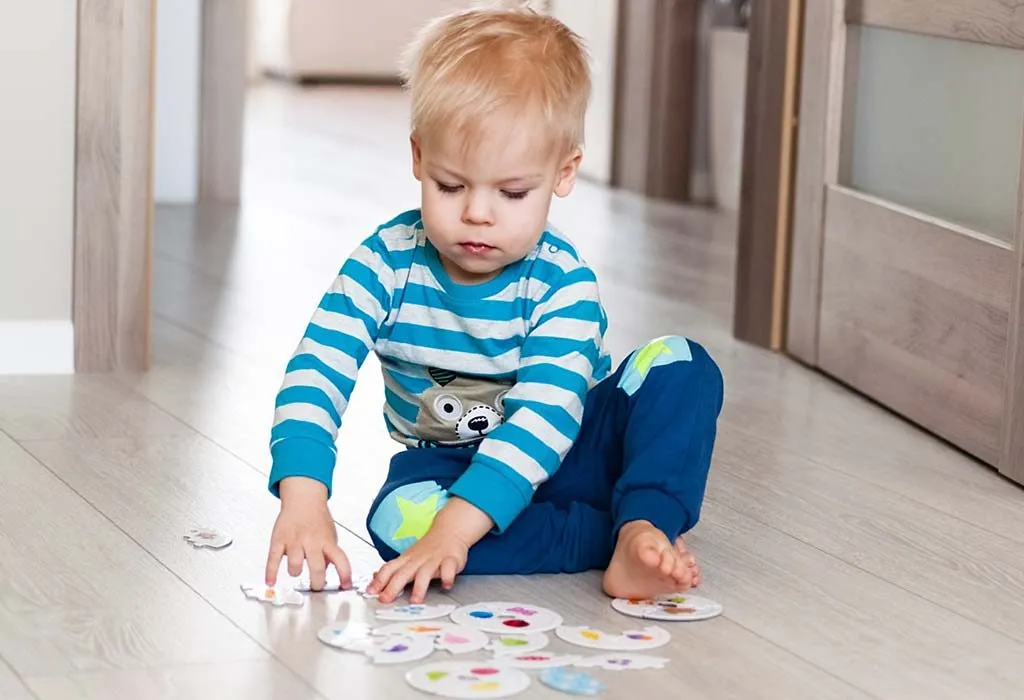
How to Encourage Constructive Play in Your Child?
Here are some ways of encouraging your munchkin to get involved in constructive play:
1. Get the Appropriate Stuff
If you wish to help your child explore unlimited possibilities, help him by getting him toys or stuff that can be constructed or used in several different ways. Some of the options include sticks and stones of different shapes and sizes, sand and tools, wooden building blocks, etc.
2. Play with Your Child
The best way to gain your child’s attention into doing something is by start doing it yourself. If your child watches you playing with objects, your child will get involved too. So, be a role model and your child will learn.
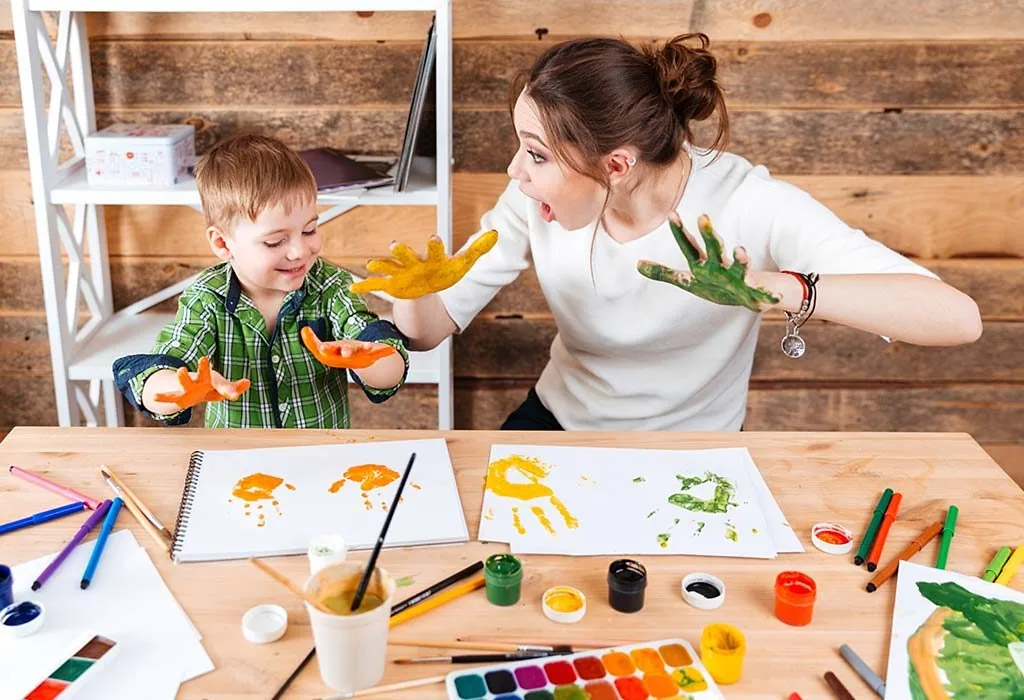
3. Get Versatile Objects
Once your child gets hooked to something, he may want to do it all the time. So, get new objects that your child can play with both indoors and outdoors.
4. Let Your Child Explore
Never force children into constructing or making something that you want. Let your little one explore and make whatever his heart and mind desire.
5. Let Your Child Be
It is a great way of escaping from reality and moving into the world of fantasies. Letting the child do what he wants to do can help trigger your child’s imagination.
6. Invite Your Child’s Friends
Children love to play with their friends or siblings. If you want your child to do something, gather his attention towards other children who are doing the same.
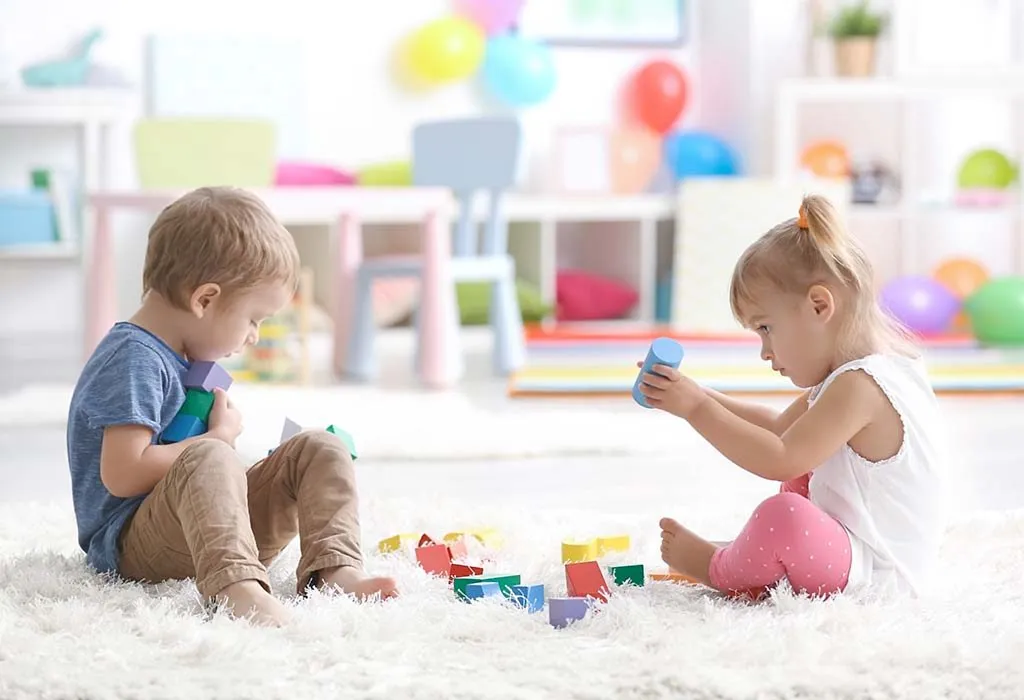
7. Make it More Interesting
If your child shows no interest in one idea or one method, you may try various other methods for gaining your child’s attention. Bright, colourful objects are the ones that gain maximum attention of the kids. So, give them a try.
8. Do Not Make it Look Tedious
Anything that looks complicated or your child feels hassled around may lose your child’s interest. Get stuff that is easy to handle and looks interesting.
9. Appreciate and Praise
Children feel happy and motivated whenever you praise or appreciate them for their efforts. In order to help your child explore possibilities, praise his initial and subsequent efforts, too.
Easy Constructive Play Activities for Your Child
Looking for some easy constructive play activities for your little one? Here are some options for construction play ideas that you may choose from:
1. Building Castles
This is an excellent type of constructive play for toddlers or preschoolers.

Image Source : AI Generated Image
What You Will Need
- Few bed sheets or blankets
- Cardboard boxes
- Few sticks
How to Play
Let your child make a structure of a castle using all the above materials. You may help your child in doing so.
2. Fun with Play Sand
This constructive play is wonderful for improving your child’s motor skills.
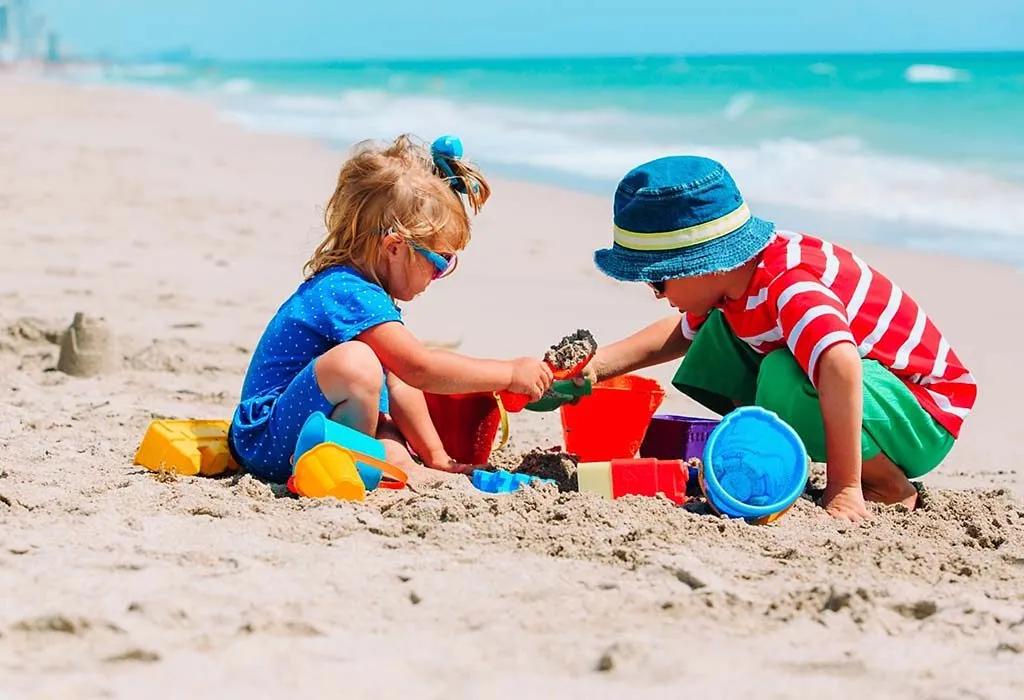
What You Will Need:
- Play Sand
- Sand tools
How to Play
Let your child explore the play sand and make different shapes using it.
3. Building Blocks
This is one of the best ways of getting your child involved in constructive play activity.

Image Source : AI Generated Image
What You Will Need:
Any good quality constructive blocks (preferably vibrant colours)
How to Play
Let your child make various structures by using building blocks. You may guide your child on how to use the blocks correctly.
4. Fun with Straws
This fun activity can be played at birthday parties or on play dates too.

Image Source : AI Generated Image
What You Will Need:
A pack of colourful straws
How to Play
- If your child is playing alone, you may ask him to make one big straw by attaching one straw with another.
- If children are playing in groups, this activity can be made into a competition of making the biggest straw.
5. Fun with Play Dough
Let your child make colourful zoo animals with dough.

What You Will Need:
5 to 6 colours of play dough
How to Play
Give play dough to your child and ask him to make different zoo animals. You may guide him about the features of various animals or colours that can be used to create different animals.
Ways to Add Constructive Play to Your Daily Activities
Constructive play doesn’t require special toys or complicated setups – you can easily incorporate it into everyday routines. Here are simple ways to bring more constructive play into your child’s day:
1. Transform Household Items into Building Materials
Collect empty boxes, plastic containers, or cardboard tubes to create a “building station.” Kids can stack, sort, and construct with these safe, everyday objects, turning recycling into creative play that costs nothing.
2. Add Construction Elements to Playtime
Keep a basket of blocks, LEGO, or wooden sticks where children usually play. These materials invite spontaneous building during free time, whether they’re making a tower while you cook or designing a road for toy cars.
3. Make Outdoor Time Constructive
Use nature’s toys – have kids build with sticks, arrange stones, or create sand structures. A simple “Can you build a bridge across this puddle?” challenge turns outdoor time into engineering play.
4. Turn Chores into Creative Projects
Involve children in constructive tasks like organising shelves (sorting by size), helping with cooking (building sandwiches layer by layer), or gardening (designing rock paths). This shows them how creation happens in real life.
FAQs
1. How does constructive play benefit children who prefer active, physical play?
Constructive play offers active children a different type of physical engagement – the fine motor challenge of precise placement, the whole-body movement of transporting materials, and the satisfaction of physically creating something. Many active children enjoy large-scale construction with big blocks or outdoor materials that incorporate movement into building.
2. Does constructive play look different for left-handed vs. right-handed children?
While the fundamental skills developed are the same, left-handed children may approach building tasks differently due to their natural hand dominance. They might assemble blocks or puzzles in reverse directions or position themselves differently at play tables. This variation actually enhances spatial reasoning as they adapt structures to their dominant hand perspective.
Constructive play is vital for a child’s overall development. Encourage your child into various constructive play activities and help him unleash his inner genius.
Also Read:
Card Games for Children
Extracurricular Activities for Children
Writing Activities and Games for Kids
Picnic Games and Activities for Children
Was This Article Helpful?
Parenting is a huge responsibility, for you as a caregiver, but also for us as a parenting content platform. We understand that and take our responsibility of creating credible content seriously. FirstCry Parenting articles are written and published only after extensive research using factually sound references to deliver quality content that is accurate, validated by experts, and completely reliable. To understand how we go about creating content that is credible, read our editorial policy here.






